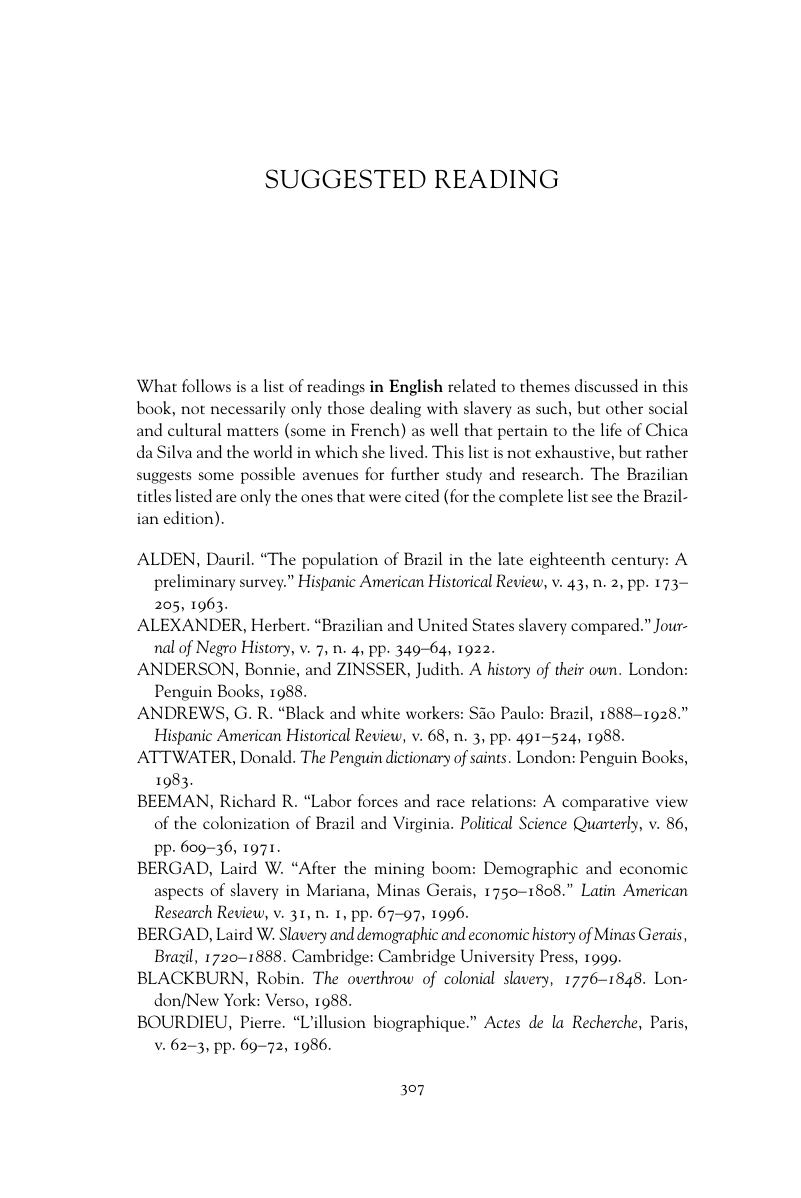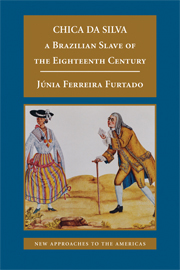Book contents
- Frontmatter
- Contents
- Acknowledgments
- Preface
- Maps
- Introduction to the English Edition
- 1 Land of Stars
- 2 Chica da Silva
- 3 The Diamond Contractors
- 4 Black Diamond
- 5 The Lady of Tejuco
- 6 Life in the Village
- 7 Mines of Splendor
- 8 Separation
- 9 Disputes
- 10 Destinies
- 11 Chica-que-manda
- Abbreviations
- Suggested Reading
- Index
- Plate section
- References
Suggested Reading
Published online by Cambridge University Press: 05 September 2014
- Frontmatter
- Contents
- Acknowledgments
- Preface
- Maps
- Introduction to the English Edition
- 1 Land of Stars
- 2 Chica da Silva
- 3 The Diamond Contractors
- 4 Black Diamond
- 5 The Lady of Tejuco
- 6 Life in the Village
- 7 Mines of Splendor
- 8 Separation
- 9 Disputes
- 10 Destinies
- 11 Chica-que-manda
- Abbreviations
- Suggested Reading
- Index
- Plate section
- References
Summary

- Type
- Chapter
- Information
- Chica da SilvaA Brazilian Slave of the Eighteenth Century, pp. 307 - 314Publisher: Cambridge University PressPrint publication year: 2008



